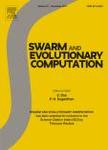版权所有:内蒙古大学图书馆 技术提供:维普资讯• 智图
内蒙古自治区呼和浩特市赛罕区大学西街235号 邮编: 010021

作者机构:Huazhong Univ Sci & Technol Sch Artificial Intelligence & Automat Key Lab Image Informat Proc & Intelligent Control Educ Minist China Wuhan 430074 Peoples R China Southern Univ Sci & Technol Dept Comp Sci & Engn Guangdong Prov Key Lab Brain Inspired Intelligent Shenzhen 518055 Peoples R China
出 版 物:《SWARM AND EVOLUTIONARY COMPUTATION》 (群与进化计算)
年 卷 期:2021年第65卷
页 面:100932-100932页
核心收录:
学科分类:08[工学] 0812[工学-计算机科学与技术(可授工学、理学学位)]
基 金:National Natural Science Foundation of China [61772214 61903178 61906081]
主 题:Multiobjective optimization Constraint handling Evolutionary algorithm Infeasible region
摘 要:Constrained multiobjective optimization problems (CMOPs) are widespread in real-world applications. Nevertheless, CMOPs with discontinuous feasible regions are challenging for existing evolutionary algorithms due to the difficulty of passing through the infeasible regions. Moreover, there are only several benchmark test problems specified for promoting the research in complex constrained multiobjective optimization. To address these two issues, we first propose a set of CMOPs with discontinuous feasible regions by introducing constraints into the widely used DTLZ test problems, and then a pioneer selection strategy is designed to handle these complex constrained optimization problems. The general idea of the proposed constraint handling strategy is simple, which selects some individuals in the population as the pioneer population, aiming to obtain some well-converged solutions without considering the constraints. By adjusting the ratio of the pioneer solutions during the evaluation, the quasi-optimal solutions are expected to approximate the Pareto optimal front. To investigate the performance of the proposed strategy, it is embedded in a classic evolutionary algorithm and compared with three state-of-theart constrained multiobjective evolutionary algorithms. Experimental results demonstrate the effectiveness of the proposed strategy and also show that the proposed benchmark problems are challenging for existing approaches.